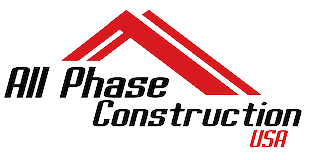
How Tariffs Are Impacting Roofing Prices—and What It Means for Metal Roofing in the Future
Tariffs have become a hot topic in recent years, influencing everything from consumer goods to industrial materials. As we navigate 2025, understanding how tariffs drive costs and what lies ahead can help homeowners, contractors, and businesses make informed decisions. Let’s break it down.
The Basics: What Tariffs Mean for Roofing Materials
Tariffs are taxes imposed by governments on imported goods, often intended to protect domestic industries or address trade imbalances. In the roofing world, many materials—like steel, aluminum, and even asphalt shingles—rely on global supply chains.
Since 2018, the U.S. has seen significant tariffs on steel (25%) and aluminum (10%), two metals critical to roofing. While these measures aimed to boost American production, they’ve also tightened supply and driven up prices. Add in global disruptions—think shipping delays, labor shortages, and geopolitical tensions—and the roofing industry has been grappling with a perfect storm of cost pressures.
Metal Roofing: A Case Study in Tariff Impacts
Metal roofing, prized for its longevity and sustainability, has been particularly hard-hit. Steel and aluminum are the backbone of metal roofs, and tariffs have directly increased the cost of these raw materials. For example:
- Steel Prices: After the 2018 tariffs, domestic steel prices spiked by as much as 30-40% in some markets. While they’ve stabilized somewhat, global competition and supply chain hiccups keep costs elevated.
- Aluminum Costs: The 10% tariff on aluminum imports, combined with rising demand for lightweight roofing options, has pushed prices upward. This affects not just roofing panels but also accessories like flashing and gutters.
Beyond tariffs, transportation costs have soared due to fuel prices and port congestion, amplifying the expense of getting metal to market. Manufacturers have little choice but to pass these costs on, meaning a metal roof that might have cost $10,000 a few years ago could now easily top $12,000 or more, depending on the region and project scope.
The Ripple Effect on the Roofing Industry
It’s not just metal roofing feeling the pinch. Tariffs on related goods—like fasteners, coatings, and even machinery used to produce roofing materials—add layers of complexity. Contractors face higher overhead, which squeezes profit margins or forces them to raise quotes. Homeowners, meanwhile, are left weighing whether to stick with metal or pivot to alternatives like asphalt shingles (which, ironically, also face price hikes due to petroleum-based components).
Demand for metal roofing remains strong, though. Its resistance to extreme weather and lower long-term maintenance costs make it a smart investment, especially as climate concerns grow.
Looking Ahead: Will Tariffs Keep Pushing Prices Up?
As of March 27, 2025, the outlook for roofing prices hinges on a few key factors:
- Trade Policy Evolution: If current tariffs on steel and aluminum remain—or expand—metal roofing costs will likely stay elevated. Any escalation in trade disputes (say, with major suppliers like Canada or China) could worsen the situation.
- Domestic Production Capacity: U.S. metal production has ramped up since tariffs began, but it’s still not enough to fully offset demand. Until local supply chains catch up, imported materials—and their tariff-driven prices—will play a big role.
- Global Market Pressures: Inflation, energy costs, and raw material shortages worldwide will compound tariff effects. For instance, if steel production in Europe or Asia falters, the U.S. market could see even tighter supply.
On the flip side, there’s hope for relief. If trade agreements ease tariffs or if domestic manufacturers innovate to cut costs, prices could stabilize. Technological advancements—like recycling scrap metal or developing lighter, cheaper alloys—might also help offset the tariff burden over time.
What This Means for You
For homeowners considering a metal roof, the timing is tricky. Prices aren’t likely to drop significantly in the near term, so locking in a project now might avoid future hikes—but it’ll still cost more than it would have pre-tariff. Contractors, meanwhile, may need to get creative: sourcing from tariff-exempt countries, negotiating bulk deals, or offering hybrid roofing options to keep bids competitive.
The Bottom Line
Tariffs have reshaped the roofing landscape, and metal roofing is at the forefront of this shift. Higher material costs are here to stay for now, driven by trade policies and global realities. Whether you’re a homeowner planning a reno or a roofer adapting to the market, keeping an eye on tariffs will be key to navigating what’s next.


Sorry, the comment form is closed at this time.